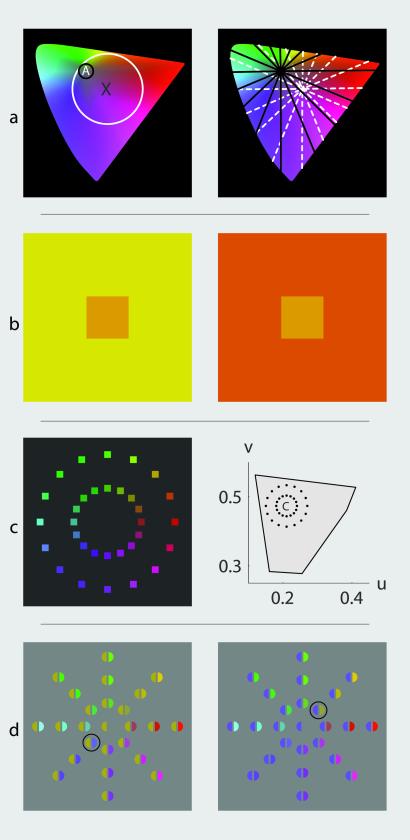Figure 1.
(a) Two properties of the achromatic point shown in the uv chromaticity space. (Left) If the small, black circle around achromatic point A is the smallest circle around this point containing all hues (albeit at low saturation), then the larger, white circle is the smallest circle around the chromaticity X that contains all hues, because, if it is made smaller, the greens will be missing. (Right) The straight lines emanating from the achromatic point are of approximately constant hue with increasing saturation. The straight lines emanating from any other point, such as the white, dashed ones, cannot all be of constant hue. (b) Simultaneous color contrast. Although the two small rectangles are physically identical, they look different because of the different inducing effects of the surrounds. The effect is even stronger when center-surround stimuli are viewed in a surround of complete darkness. (c Left) Schematic picture of the display used in experiment 1 with a black surround. The surrounds in the experiment were chromatic and equiluminant to the patches. (Right) Chromaticities of the patches for a center C, which, in this case is equal energy white, and an inner circle radius of 0.03. The polygon is the border of the monitor gamut at the luminance used in our experiments. (d) Schematic illustration of the scission account of our results outlined in Discussion. Left and Right correspond to the situation of a yellow and a blue surround, respectively. The left half of each disk represents the color of the common background component, and the right half represents the color of the “contrast component.” A feature that is not clear from this figure is that the salience of the background component increases as the infield chromaticity approaches that of the surround. The figure illustrates the impossibility of making true achromatic settings and the best alternative choice (black rings).

